Program
A traditional Bharatanatyam Margam featuring seven classical pieces.
Event Recording
Watch the complete recording of the Books Beyond Borders Bharatanatyam performance
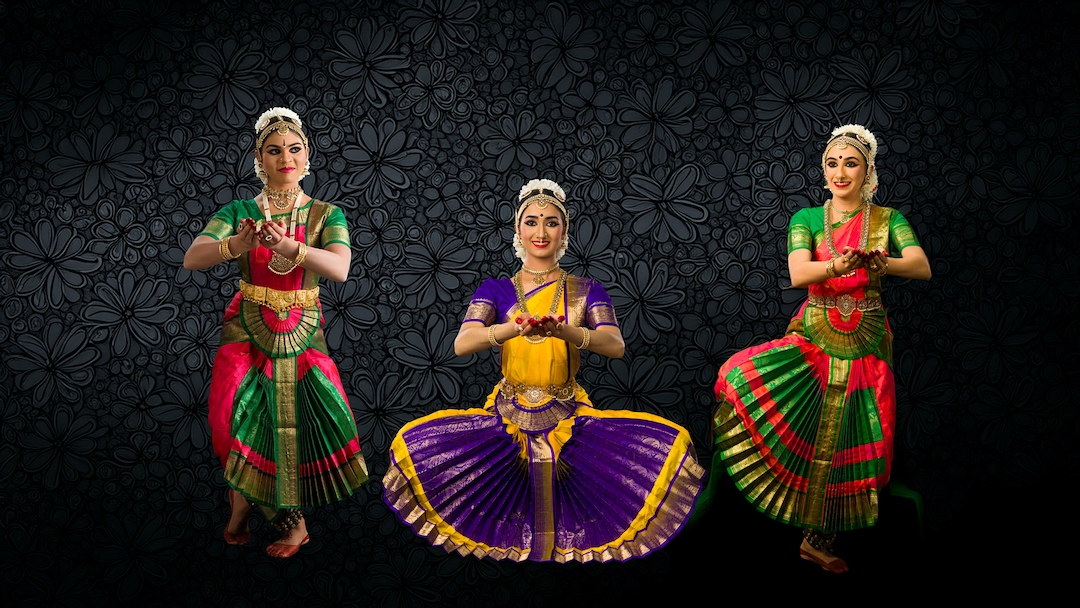
1. Pushpanjali
The word Pushpanjali is derived from two Sanskrit words: "Pushpa" meaning flower, and "Anjali" meaning a gesture of offering made by cupped hands. So, Pushpanjali literally means "an offering of flowers with joined hands."
In the context of Bharatanatyam, this offering is both symbolic and devotional. In this invocatory piece, the dancers offer flowers, respects, and salutations to the divine, the guru, the musicians, and the audience. It is a traditional way to seek blessings for a successful performance and to express humility and devotion. The dancers also pay respect to Lord Ganesha the remover of all obstacles and seek his blessings.
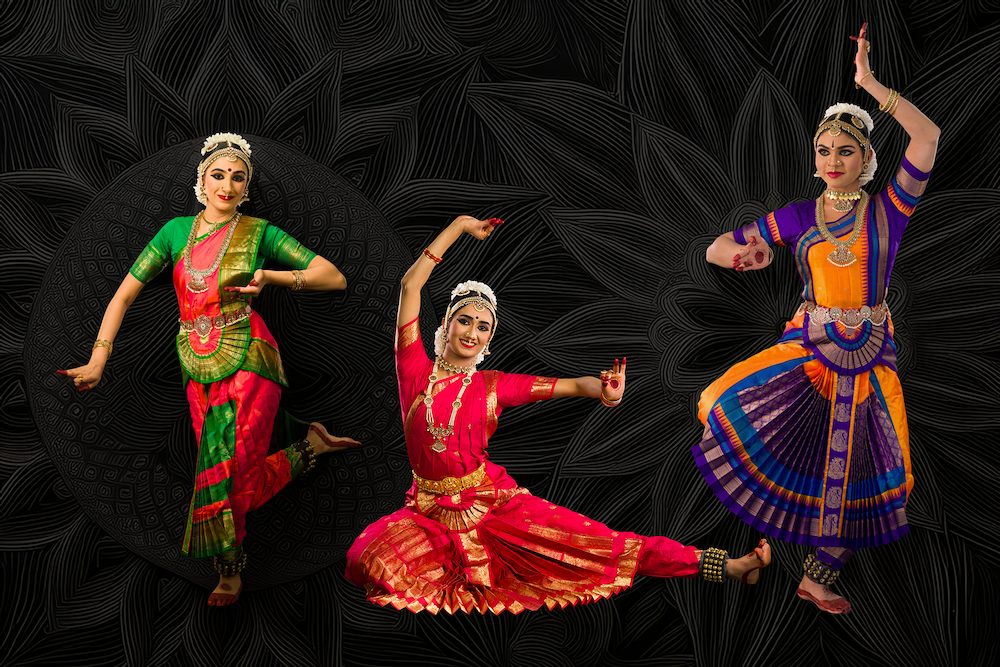
2. Jathiswaram
Jathiswaram, a vibrant and dynamic item that showcases the dancer's command over rhythm and movement. Jathiswaram is a pure dance item, emphasizing nritta — the abstract, rhythmic aspect of Bharatanatyam.
Set to the majestic raga Thodi, known for its depth and intensity, this composition blends intricate jathis (rhythmic patterns) with graceful swara passages (musical notes). This piece celebrates the technical brilliance and aesthetic beauty of the dance form, allowing the dancers to explore its structure and energy.
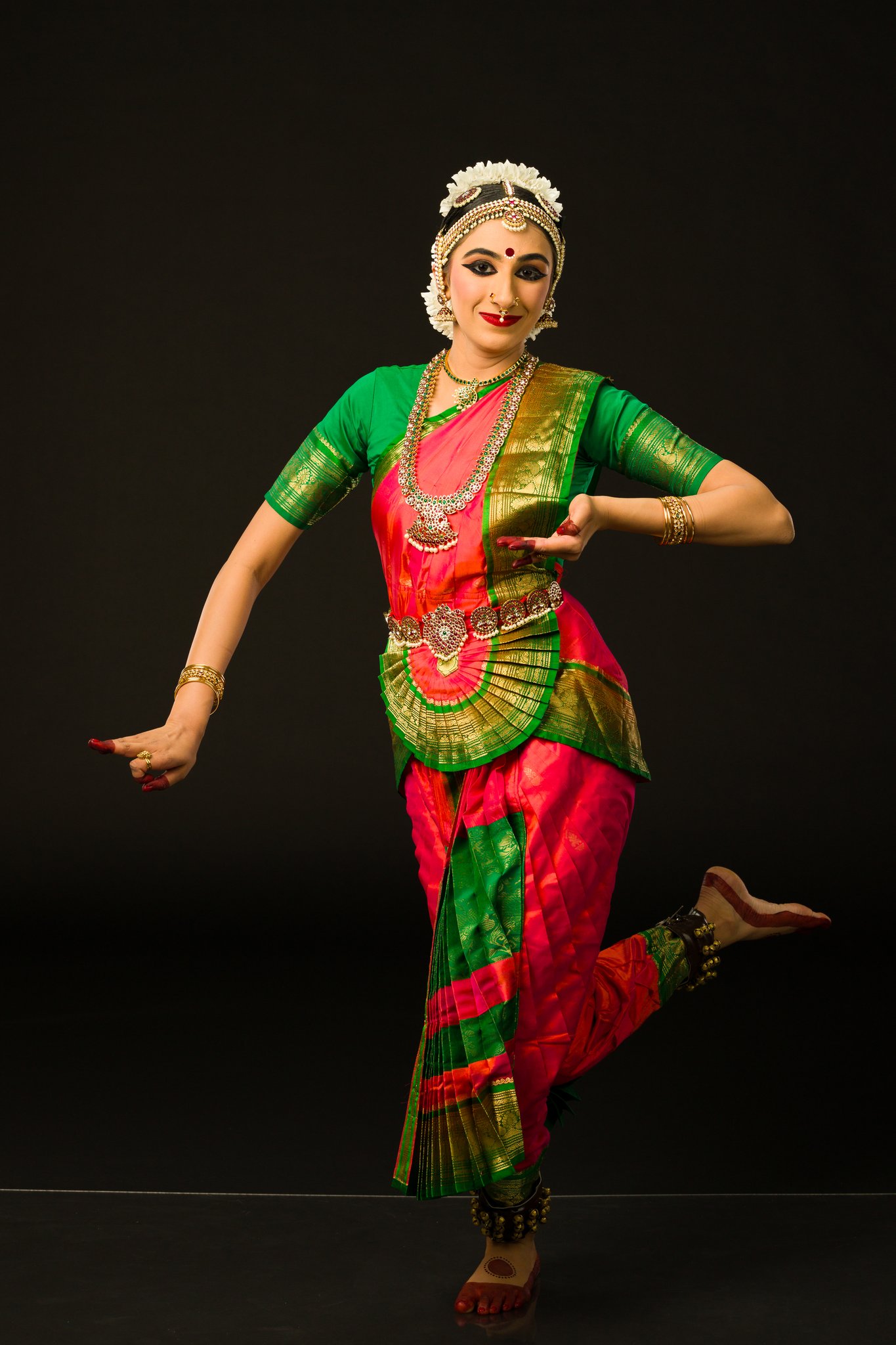
3. Saraswati Shabdam
Shabdam which is typically the first piece of the repertoire to include abhinaya, or expressions. This Shabdam is in praise of Goddess Saraswati, the goddess of knowledge, arts, and music. The choreography reflects the divine attributes of Saraswati, with the dancer praying to the goddess to bless her with artistic abilities.

4. Varnam
Varnam is the central and most elaborate item in a Bharatanatyam Margam. It is a demanding number testing not only the stamina of a dancer but also the training, the skill, and the ability to successfully alternate between pure dance or nritta and abhinaya or expression. It consists of jathis and saahithyams. Jathis are the rhythmic patterns and are danced to a talam, while saahithyams are focused around storytelling and expressions.
Today's varnam is a tribute to the cosmic dancer, Lord Shiva, celebrating his divine performance in the sacred temple of Chidambaram. The heroine invites her friend to behold the mesmerizing sight of Shiva's celestial dance. She describes the rhythmic chime of his ankle bells as he moves with grace and majesty, adorned with the crescent moon and the sacred Ganges flowing through his matted locks. In his hands, he holds fire and a deer—symbols of creation and destruction.
Accompanying him in this divine performance are Lord Brahma keeping time on the cymbals, Lord Vishnu playing the flute, the celestial sages Tumburu and Narada singing in harmony, and Nandi keeping rhythm on the drums. Together with his consort, Goddess Parvati, Shiva dances in divine ecstasy.
The dancers also portray a sanchari—a short narrative interlude. In this episode, Brahma and Vishnu dispute who among them is supreme. To resolve the conflict, they seek Shiva's judgment. Shiva manifests as a boundless pillar of light, challenging Vishnu to find its base and Brahma to find its summit. Despite their efforts, neither succeeds, ultimately realizing Shiva's infinite and eternal nature—and offering him their reverence.
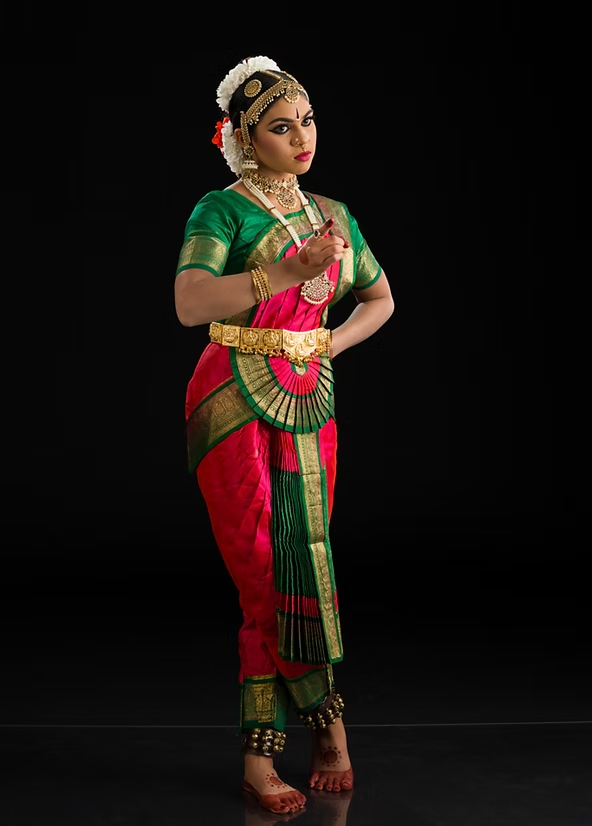
5. Maadu Meikkum Kanne
Celebrating the beauty of the relationship between a mother and her child, we bring to you, "Maadu Meikkum Kanne". This piece is an interesting banter between little Lord Krishna, who is adamant to go out with the cows and his friends in the middle of the day and his dear mother Yashoda who is persistent with her attempts to reason with him on why he should not go. Lets wait and watch as to who wins the battle.
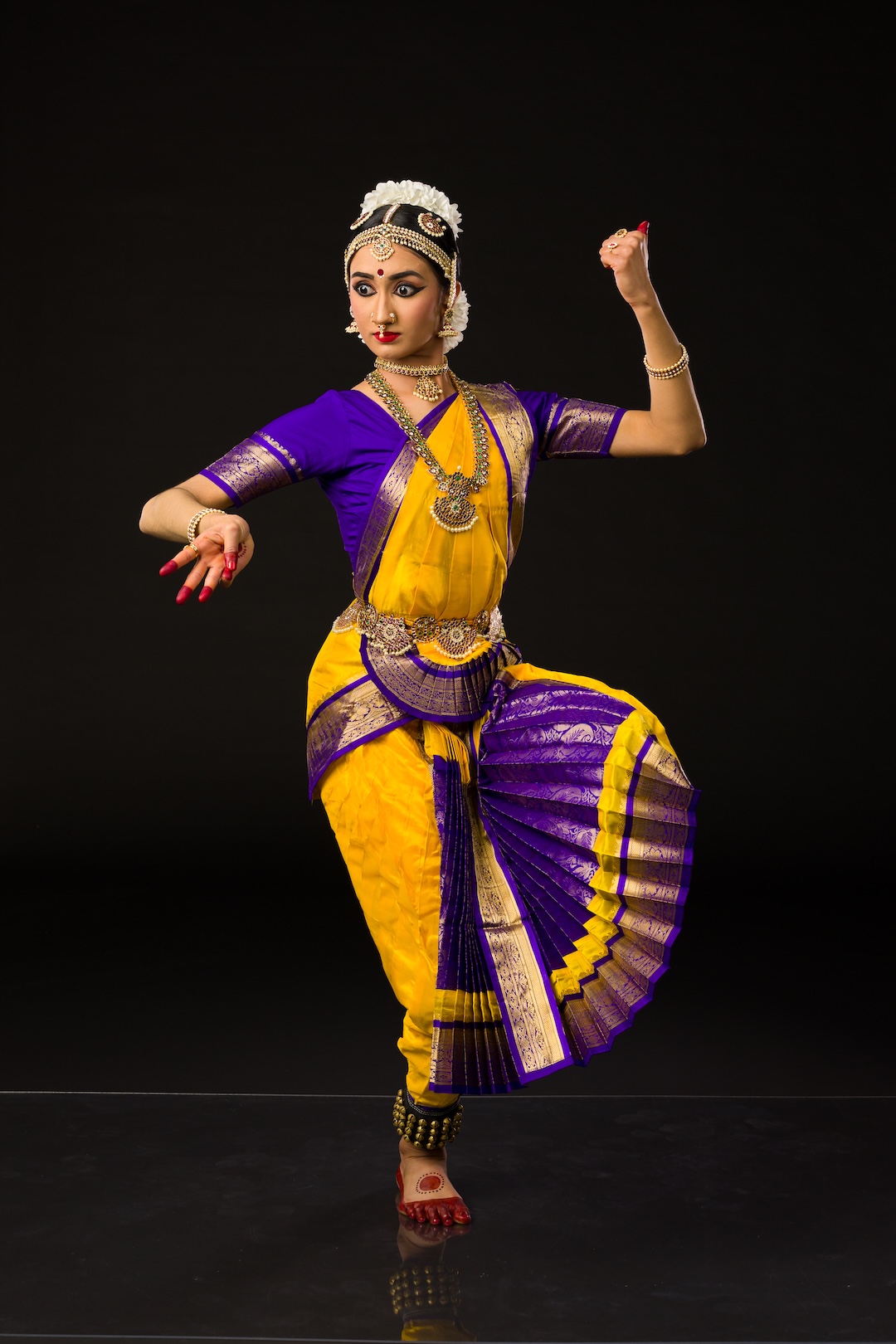
6. Durge Durge
This piece sings praise of Goddess Durga, consort of Lord Shiva, as the embodiment of feminine power, divine protection, and the victory of righteousness over evil. She is vividly portrayed astride a majestic lion or tiger, armed with celestial weapons. In this composition, Durga appears with eighteen golden hands and a thousand eyes, bearing the conch, chakra, bow, and arrow, each symbolizing her vast powers. Radiating both strength and beauty, she commands reverence, as the stanza concludes with the poet and dancer humbly bowing before her to seek blessings.

7. Thillana & Mangalam
Tillana is a lively composition performed towards the end of a concert. It is predominantly a rhythmic composition where the dancer exhibits complex nritta (pure dance) and poses. It mostly comprises jatis (rhythmic patterns) as a part of the composition and few lines of Sahityam (or lyrics) in the end.
Today's Thillana is set to ragam Kadakuthuhalam, Kuthuhalam means happiness and so this thillana is meant to bring immense joy to the audience. The verse is in praise of Lord Krishna and describes how he and his melodious flute enchant everyone including the animals and instill the feeling of love for everyone around him.
The dancers will conclude with a mangalam. The word "Mangalam" means auspiciousness or well-being, and the dancers offer their gratitude to the divine, their Guru, the musicians, and the audience for the successful completion of the performance.